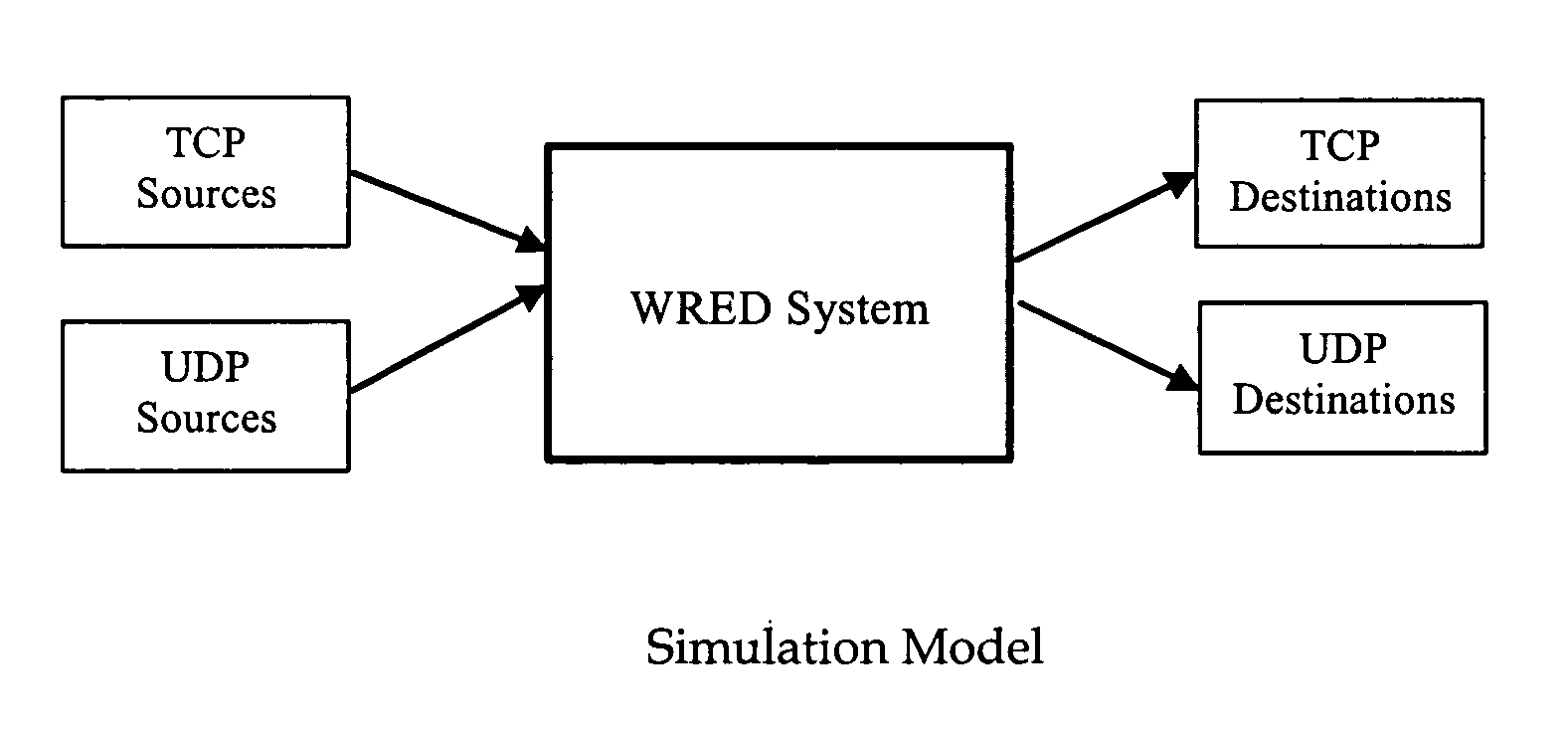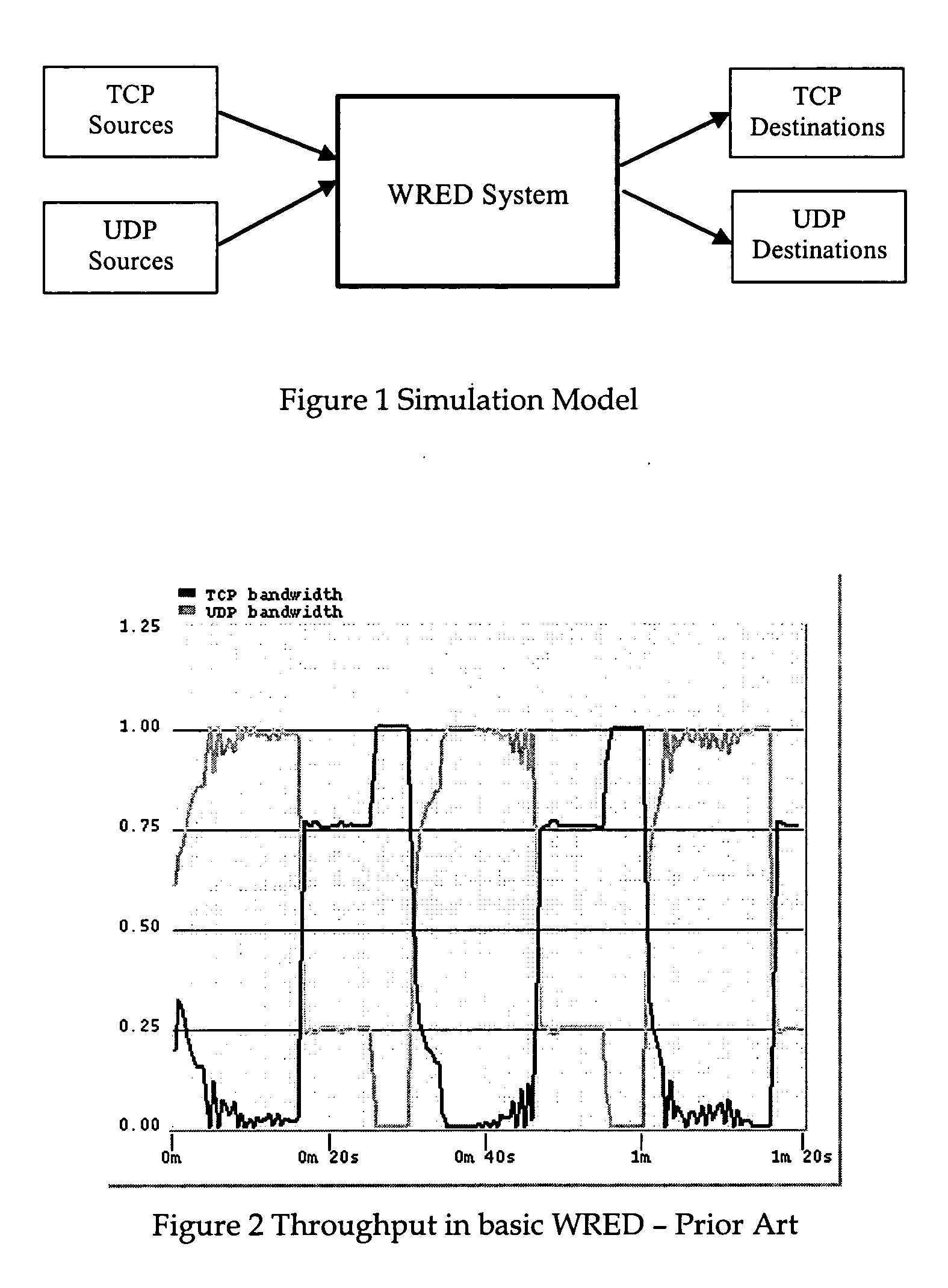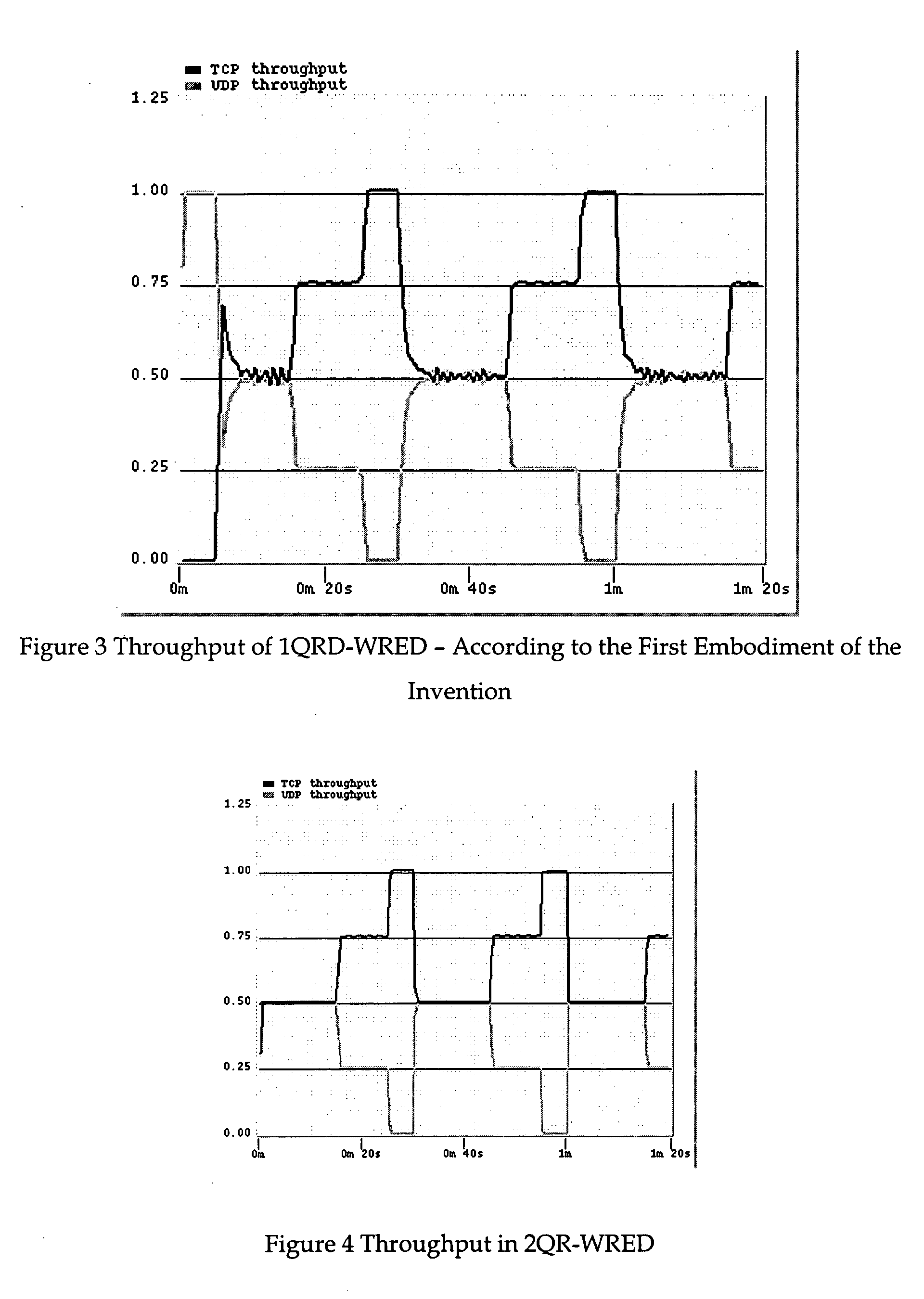Fair WRED for TCP and UDP traffic mix
a traffic mix and udp technology, applied in the field of fair wred for tcp and udp traffic mix, can solve the problems of wred implementations that do not account for the differences in tcp and udp behavior in response to packet discarding, udp monopolizing buffer bandwidth to the detriment of tcp traffic, and wred implementations that do not distinguish between these two types of traffic, so as to reduce the impact of buffer space that the effect o
- Summary
- Abstract
- Description
- Claims
- Application Information
AI Technical Summary
Benefits of technology
Problems solved by technology
Method used
Image
Examples
second embodiment
[0027] Complete details of this and the invention including extensive simulation results are described in a soon to be published technical paper entitled “Fair treatment of mixed TCP and UDP traffic under WRED” by the inventors of the present application. The contents of the paper are incorporated herein by reference.
[0028] The invention includes two processes: the background process, called periodically every T, and the arrival process, called every time a packet arrives to the system. The arrival process uses results from the background process to determine whether to accept or discard each packet that arrives.
[0029] The arrival process is as follows: [0030] If the arriving packet is UDP, the process compares the amount of space occupied by UDP packets with the UDP threshold, which is calculated by the background process. If the UDP threshold is exceeded, the UDP packet is dropped. Otherwise, it is accepted. [0031] If the received packet is TCP, the process discards a packet with...
first embodiment
[0048] Simulations of the two implementations of the first embodiment, and their comparison with the basic WRED that does not distinguish between responsive and non-responsive flows, show how well the invention solves the problem of unfairness between UDP and TCP. For example, FIG. 2 shows the throughput of UDP and TCP traffic for the basic WRED in the following scenario. A TCP source continuously sends traffic at 100% of the bandwidth, beginning 5 seconds after the simulation is started. A UDP source sends traffic at 100% of the bandwidth for 15 seconds, 25% for 10 seconds, and remains idle for 5 seconds. Then, the whole cycle begins again.
[0049] Clearly, UDP traffic gets its desired share of bandwidth, while TCP gets the rest (or almost nothing, when UDP's load is 100%). As mentioned above, in a simple WRED, UDP can use any amount of bandwidth it can get. This is because of inherent properties of UDP and TCP protocols—UDP is aggressive, and TCP is not, yielding to UDP traffic. Thi...
PUM
 Login to View More
Login to View More Abstract
Description
Claims
Application Information
 Login to View More
Login to View More - R&D
- Intellectual Property
- Life Sciences
- Materials
- Tech Scout
- Unparalleled Data Quality
- Higher Quality Content
- 60% Fewer Hallucinations
Browse by: Latest US Patents, China's latest patents, Technical Efficacy Thesaurus, Application Domain, Technology Topic, Popular Technical Reports.
© 2025 PatSnap. All rights reserved.Legal|Privacy policy|Modern Slavery Act Transparency Statement|Sitemap|About US| Contact US: help@patsnap.com



